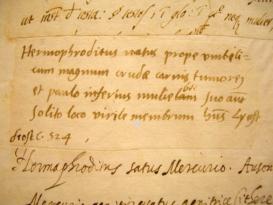Building on Gianna Pomata’s and Nancy G. Siraisi’s notion of "learned empiricism," this project aimed at overcoming the dichotomy between early modern erudition and enlightened empiricism, which is present not only in the writings of eighteenth-century intellectuals but also in a considerable portion of the secondary literature. It thus makes an important contribution to our discussion of "the Scientific Revolution," of late a much disputed concept. In order to do so it concentrated on the early modern naturalist discourse on monsters and tackled the following questions: Whence did European naturalists in the seventeenth century get their knowledge on this subject matter? Which knowledge sources did they privilege and consider especially authoritative–book learning or empirical observation, if indeed they were opposed?
Fabian Krämer argued that there were distinctly early modern types of empiricism that had strong learned components. These learned components lay at the heart of his explanation of the presence of reports and visualizations of phenomena in the works of early modern European authors that appear unbelievable to the modern reader. Think of the birth of a lion or a horse with a human head and voice, or a race of centaurs allegedly living somewhere in the East. For many Renaissance naturalists accounts that they culled from the works of both contemporary and ancient learned and less learned authors could well go together with their own minute observations of medical or natural historical phenomena.

